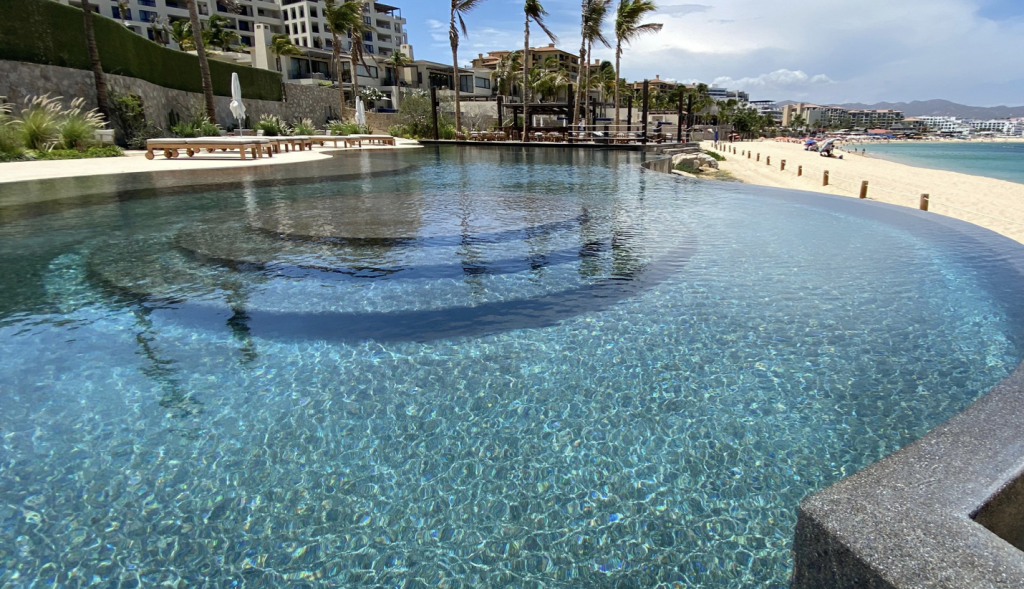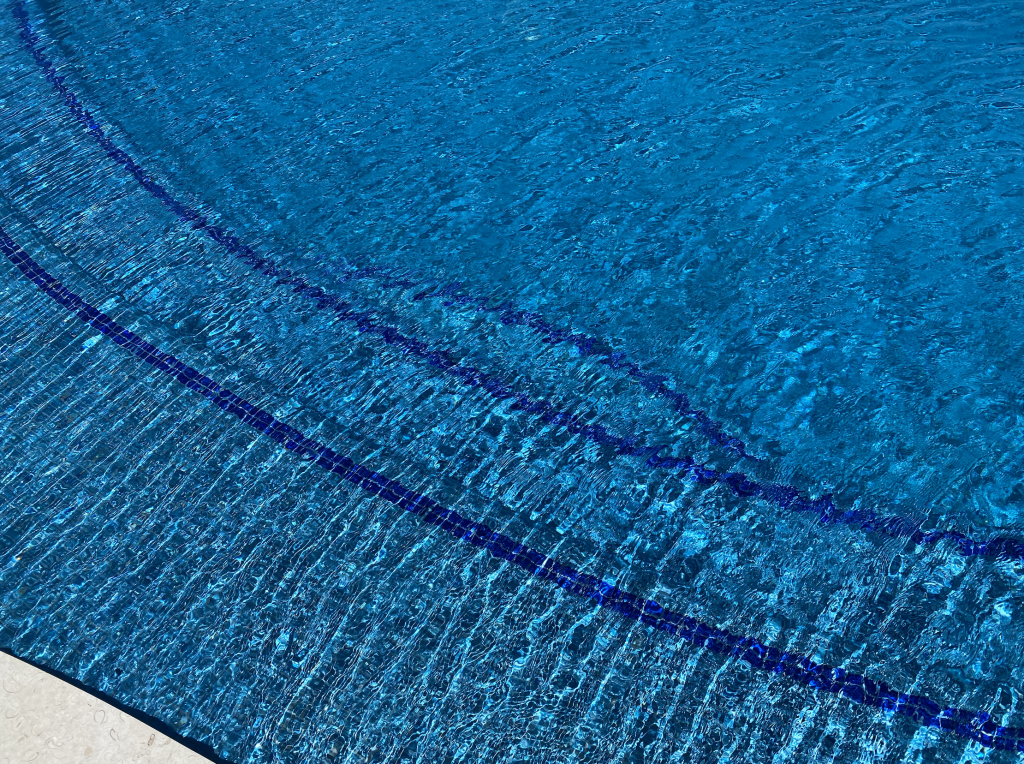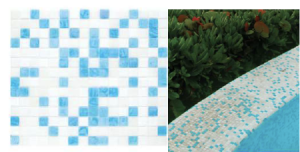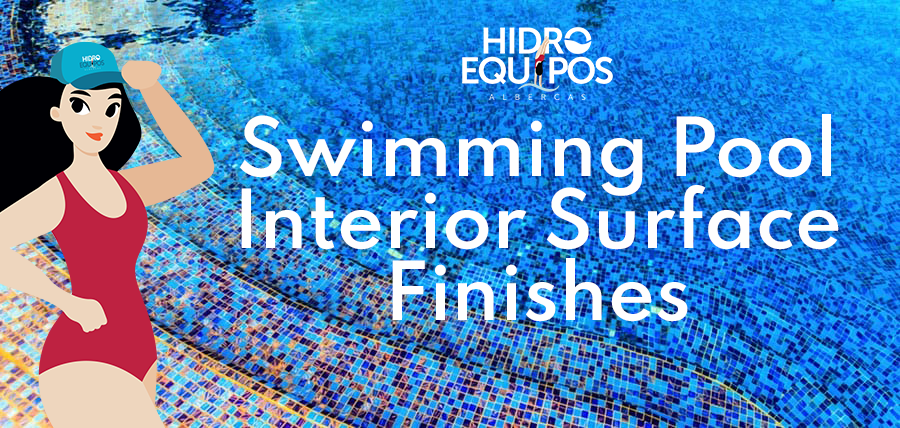While building a pool, there are many things to consider. One of the biggest items for a homeowner to prioritize when building a pool is selecting a pool interior surface. A swimming pool’s surface is an essential part of the oasis that deserves a high level of attention. Choosing the material for your pool’s surface will impact the appearance and appropriate to what feels right under the feet. Thankfully, there are many options available for pool surface materials.
Plaster Finish
Plaster is a comparatively cheaper alternative with many color options. The color white is the most standard; it doesn’t limit the color of the swimming pool to just one shade. In the long run, plaster requires a lot of maintenance and upkeep. Plaster can discolor due to improper chemical balance and other factors that lead it to need repainting and re-plastering more often. We at Hidroequipos will not use this option as a pool finish due to the higher maintenance and upkeep needed. Our goal is to build a superior quality pool that you will spend time enjoying with minimal upkeep on your part needed.
Pebble Finish

Pebble finishing is becoming more popular than regular plaster. It may cost more upfront but has a longer lifespan and is easier to maintain. It does not absorb pool chemicals and is resistant to algae growth. If a homeowner chooses for a tropical designed pool, pebble inlay is the best option. It gives a more natural look that is similar to sand.
The pebble surface has a mix of cement and polished stone pebbles. After the concrete is dry, the mixture goes pneumatically; then, it gets water blasted or hand-wiped to uncover the top layer of the surface.
There is a variety of colors available. Some colors are bright and summery, or fresh and modern. A designer can help come up with the right choice to match the finishing touches that will give elegance to the oasis. The texture also contributes to the color and the feel.
Another advantage of selecting pebble inlay is low maintenance. It is stain-resistant, anti-slip, and non-porous.
In order to clarify a bit the terms or types of coatings and their characteristics, I would like to present to you the following explanation:
The Pebble tec brand over time has become a reference for all of us who make this type of finishes and coatings.
Originally Pebble tec was a single type of coating with its different mixes and / or colors, but it was basically a single material.
There are other types of coatings (plasters) formed from other types of materials from other brands, including the best known from Dymond brite.
Currently there are a number of brands, types, colors and textures, but these two brands remained as references.
Pebble Tec and Diamond Brite.
Later a third called Ekol was integrated, this already Mexican and invented by the Kolorines company.
Currently, all the companies of everything and each one put their own names, but we can say that there are only 3 types or references and from there everything starts.
- Traditional Pebble Tec. Mixtures of natural quartz stone extracted directly from the beaches, in 3 colors, white, black and Golden, which is cleaned, sifted or separated to mix with white cement, color certain additives.

- Diamond Brite. Mixtures of marble, white cement, color, certain additives and “sparks” of artificial colored stone, the quality of this stone being the secret of quality

- eKol. Vitreous stone mixtures rounded in a large number of colors to be mixed with white cement, color and certain additives.

These 3 types are also already mixed together, generating an infinite range of possibilities.
Consult with our experts which is the best option for each case.
All Tile Surface

The advantage of selecting an interior tile surface for your pool is that it comes in almost every shape and color imaginable. Well applied it can have a considerable duration although it requires that every year or two be given more maintenance. An important aspect to consider when selecting the tile is the size of the tile. The tile in large glass pieces can crack due to thermal shock and are less stable, we recommend in all cases the 2 × 2 cm (1 ”x1”). We recommend that prospective pool owners or remodelers do their homework and ask any of our designers which pool tile option would be best for them.



Our recommendation in tile is the mixtures, that is, mixtures of different tones, these give more life and movement to the water.
Make it a standard tile easy to get in the area, definitely rule out buying it abroad, since in case of needing a repair it will be very difficult to get them.


